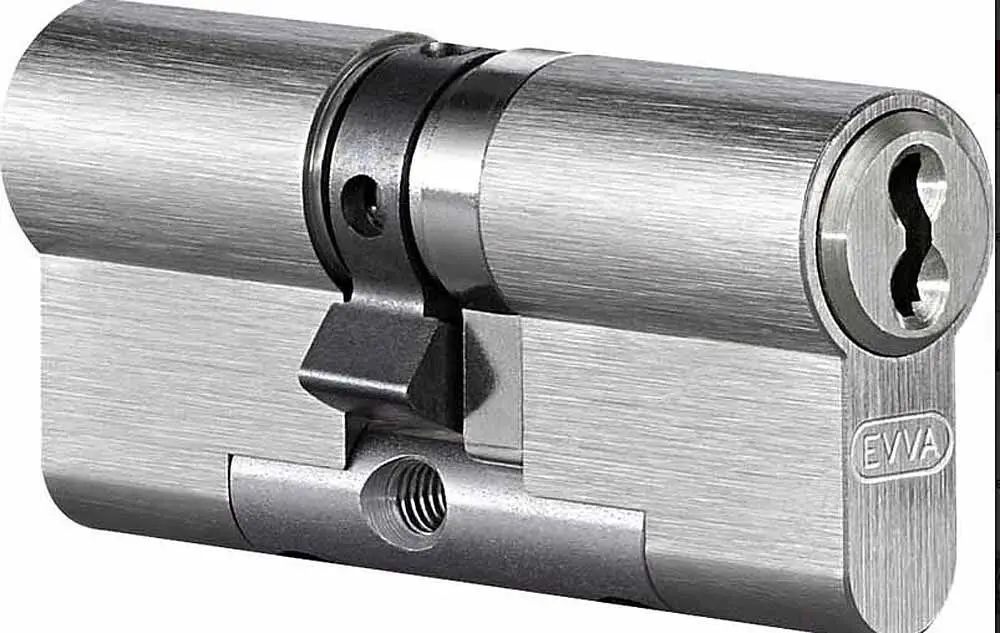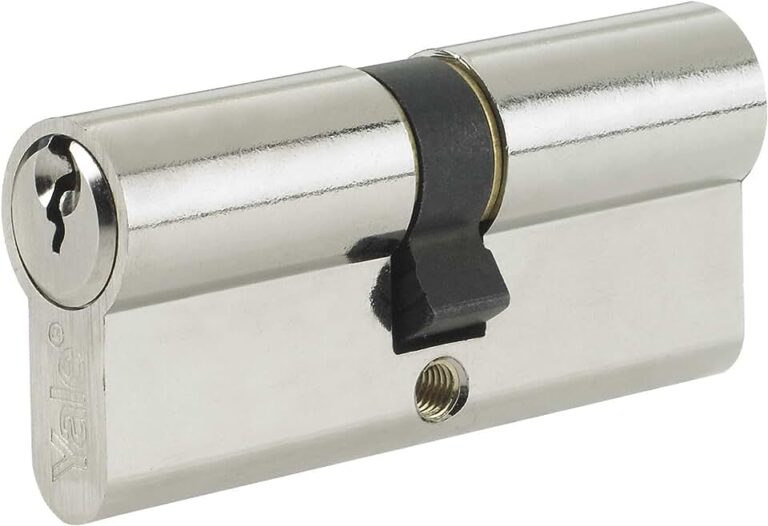Introduction
How To Program A New Ignition Lock Cylinder: Programming a new ignition lock cylinder might seem like a daunting task, but with the right tools and instructions, it can be a manageable DIY project. This guide will walk you through the necessary steps to program a new ignition lock cylinder for your vehicle. Helping you regain control of your car’s ignition system and ensuring the security of your vehicle.
This detailed tutorial will give you the skills and confidence to program. A new ignition lock cylinder for your vehicle, whether you’re a mechanic or an enthusiast.
This process involves reprogramming the new cylinder to recognize your specific key’s unique code. Depending on your vehicle’s make and model, the lock code programming process may vary, and you may require specialized tools or software. However, fear not, as this guide will cover the general steps involved in programming a new ignition lock cylinder.
Before you begin, make sure you have your vehicle’s service manual, the new ignition lock cylinder. Your vehicle’s key, and any necessary tools or software. With patience and attention to detail, you’ll be able to successfully program your new ignition lock cylinder. Ensuring the safety and security of your vehicle for the road ahead. Let’s dive deeper into the process, step by step, so you can confidently complete this important task.

How do you program a new ignition?
Insert the key into the ignition, and turn it to the on position. Don’t turn on the engine, only the electronics. Leave the key in this position for 10 minutes and 30 seconds, and then turn it off. Turn the key back on, and wait for additional 10 minutes and 30 seconds before turning it off again.
Service Manual: Consult your vehicle’s service manual for specific instructions and safety precautions related to your make and model.
New Ignition Component: Ensure you have the correct replacement ignition lock cylinder, ignition module, or any other relevant component.
Ignition Key: You’ll need the key that corresponds to the new ignition component.
Battery Charger: Ensure your vehicle’s battery is fully charged or connected to a battery charger to prevent any power interruptions during the process.
Safety Gear: Wear safety glasses and gloves to protect yourself during the installation.
Does a new ignition have to be programmed?
Yes. A new ignition will come with a set of new keys. You must program them for your car.
Ignition Module or Immobilizer: In many modern vehicles, the ignition system includes an electronic module or immobilizer that communicates with the vehicle’s engine control unit (ECU) or body control module (BCM). This module may need to be programmed for your key. Failure to do so can result in the vehicle not starting or even triggering anti-theft measures.
Transponder Keys: Many electronic ignition systems use transponder keys equipped with a microchip. There needs to be coordination between the key and the car’s ignition. When you insert the key, the ignition system communicates with the chip in the key to verify its authenticity. Without matching, the engine won’t start.
Dealer or Professional Service: Programming electronic ignition components often requires specialized equipment and software. Typically available at dealerships or automotive service centers. They have the tools and expertise to program the new ignition component to work with your vehicle.
Do you have to reprogram key after replacing ignition switch?
However, if your vehicle has an anti-theft or push-button start system, then the answer is yes — you will either need a new key when replacing an ignition switch, or you’ll need your existing key reprogrammed.
Transponder Keys: Many modern vehicles use transponder keys, which have a microchip embedded in them. The key and ignition system must be synced to start the car. When you insert the key into the new ignition switch, the vehicle’s immobilizer system should recognize the key’s unique code. If the key is not programmed or synchronized with the new ignition switch. The engine may not start, or it may start briefly and then shut off as a security measure.
Immobilizer System: Some vehicles have an immobilizer system that communicates with the key and the ignition switch. If you replace the ignition switch without reprogramming it to work with your existing keys. The immobilizer system may prevent the vehicle from starting.
Professional Service: To reprogram keys or the new ignition switch in modern electronic systems. Specialized equipment and software are often required. Typically, this service is available at dealerships or automotive service centers. Where experienced technicians can synchronize the key and ignition switch.
Can I program my ignition key?
Modern cars include transponder keys with microchips that connect with the immobilizer. These keys increase security by preventing the car from starting without the correct key and chip.
Whether you can program your ignition key depends on several factors, including your vehicle’s make and model. The type of key you have, and the available equipment and knowledge. Here’s a detailed explanation of how you can program your ignition key:
Vehicles with mechanical ignition systems and non-transponder keys rarely need programming. These keys are purely mechanical and operate the ignition switch without electronic components or security features. If you need to replace such a key, you can typically have a duplicate made at a locksmith or hardware store without any special programming.
Modern cars include transponder keys with microchips that connect with the immobilizer. These keys increase security by preventing the car from starting without the correct key and chip. Programming a new transponder key typically involves the following steps:
First, obtain a blank transponder key that is compatible with your vehicle’s make and model. This key should be blank and unprogrammed.
What is ignition switch mode?
The ignition switch has four positions: LOCK (0), ACCESSORY (I), ON (II), and START (III). Use this position only to start the engine. The switch returns to the ON (II) position when you let go of the ignition switch.
In the “Off” position, the ignition switch cuts off all electrical power to the vehicle. This option fully disables the vehicle’s electrical systems. In park or with the motor off. To remove the key, turn the switch to this position.
In “Accessory” mode, the ignition switch powers vehicle accessories without starting the engine or other vital systems. This mode is used to listen to the radio, operate the power windows. Other electrical accessories without starting the engine.
The ignition switch starts the engine in “Run” mode, which powers most of the vehicle’s electrical systems. In this mode, the key powers the ECU and other vital systems, starting the engine. Once the engine is going, release the switch and let it run alone.
To rev the engine, put the ignition in “Start”. Turning the key this way ignites the fuel because the starter motor rotates the crankshaft. Once the engine has started, you can turn the key back to the “Run” position and let it go.
What is the principle of ignition switch?
When triggered by a key or button, the ignition switch sends battery voltage to the ignition coil to spark the engine. To start the engine, the coil or coils send the engine spark to the spark plugs.
If a vehicle’s key is lost or stolen, it becomes a security risk. To prevent unauthorized access and potential theft, the vehicle owner may choose to reprogram the vehicle’s immobilizer system or electronic key fobs. This process deactivates the lost or stolen key, rendering it useless for starting the vehicle.
Broken, worn, or compromised keys may need replacement. Replacement keys must be programmed into the vehicle’s security system for ignition and immobilization.
Sometimes it’s convenient for car owners to have extra keys made, to give to trustworthy friends and family members in case they lose theirs. Each replacement key must be modified to work with the car’s immobilizer. This procedure guarantees that any legitimate key will function to start the car.
Car repairs may require ignition system component replacement. Set replacement ignition switches, ignition lock cylinders, and immobilizer modules to work together. This lets the vehicle’s immobilizer system recognize the new parts and prevent starting problems.
Why do keys need to be reprogrammed?
Modern keys must match your Vehicle Identification Number, but engine fault codes or wear-and-tear can distort this programming.If that’s the case, it may be possible to reprogram the key yourself depending on your vehicle.
Off: In this position, the ignition switch cuts off all electrical power to the vehicle. When the engine is off, it cuts electricity to the car’s electrical components.
Accessory (ACC): This position provides power to various vehicle accessories (e.g., radio, power windows) without activating the engine.
Run: The “Run” position supplies power to the engine control unit (ECU) and other critical systems, enabling the engine to start and run.
Start: The “Start” position is used to engage the starter motor, which turns the engine’s crankshaft to start the combustion process.
Lock: Some ignition switches have a “Lock” position that secures the steering wheel and prevents the key from turning, serving as an anti-theft measure.
How much does it cost to reprogram ignition?
The cost of a new ignition switch could run from $125 to $275, including parts and labor. Although the cost of car key programming will be higher, you will likely get a cheaper price for a standard key. For a basic key, a cheap locksmith will charge $50 to $100 to reprogram it.
The complexity of the reprogramming process can influence the cost. If the programming involves additional steps, multiple keys, or the need to reset or replace the immobilizer system, it may incur higher charges.
Both key cutting and lock repair can benefit from key programming. These additional services can affect the overall cost.
Regional factors can also impact pricing. In areas with a higher cost of living or increased demand for automotive services, the cost of reprogramming may be higher.
Estimated Costs:
On average, the cost of reprogramming an ignition key can range from $50 to $200 or more, depending on the factors mentioned above. Basic reprogramming for a traditional mechanical key may be on the lower end of this range, while reprogramming a transponder key or smart key at a dealership could be on the higher end.

Conclusion
A new ignition lock cylinder is a crucial task to maintain the security and functionality of your vehicle’s ignition system. While it may seem like a complex procedure, following the steps outlined in this guide and consulting your vehicle’s service manual will empower you to successfully complete this task. Remember to exercise patience, attention to detail, and safety precautions throughout the process.
By correctly programming your new ignition lock cylinder, you ensure that only your key can start your vehicle, reducing the risk of unauthorized access and potential theft. This DIY project not only saves you money but also gives you a sense of accomplishment in maintaining and securing your car.
Always be mindful of the specific requirements and nuances of your vehicle’s make and model, as programming procedures may vary. If you encounter any challenges or uncertainties, it’s advisable to seek professional assistance or consult with your vehicle manufacturer for further guidance.

